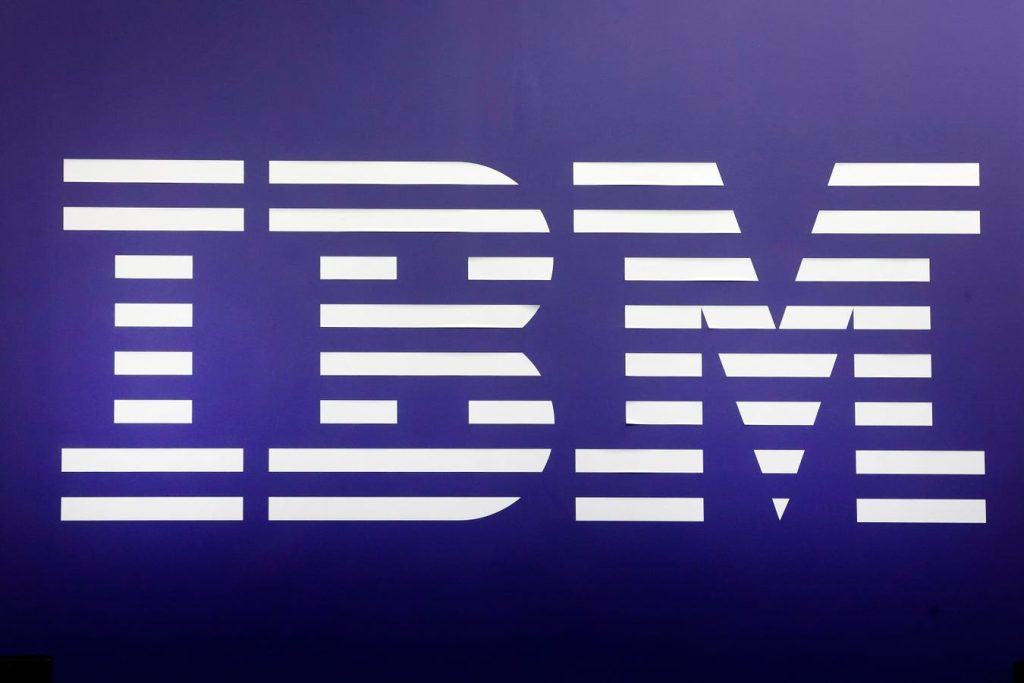PARIS, FRANCE – JUNE 12: The logo of the computer hardware, software and services company, IBM is displayed during the 9th edition of the VivaTech show at Parc des Expositions Porte de Versailles on June 12, 2025 in Paris, France. (Photo by Chesnot/Getty Images)
Getty Images
IBM (NYSE:IBM) stock has declined 15% over the past month, lagging the S&P 500, which rose 2% over the same period. The slide largely reflects the latest quarterly report, where software segment sales came in below expectations. This shortfall weighed on sentiment, particularly after investors had grown more upbeat about this part of the business.
With shares around $240, the question is whether there’s still upside following the pullback. We think there is.
Our view stems from comparing IBM’s current valuation with its recent operating trends and financial strength. Across growth, profitability, balance-sheet health, and downturn resilience, IBM shows solid operating execution and a good financial profile— consistent with a moderate valuation today.
Given IBM’s ongoing push to reaccelerate sales and its leadership in emerging areas such as quantum computing, we believe the stock merits a higher valuation multiple. We detail the reasoning below.
That said, if you want upside with lower volatility, the Trefis High Quality portfolio is an alternative—having outperformed the S&P 500 with returns above 91% since inception. Separately, see – What’s Happening With UNH Stock?
How Does IBM Stock’s Valuation Look vs. The S&P 500?
On sales and profit multiples, IBM appears reasonably priced relative to the broader market.
IBM has a price-to-sales (P/S) ratio of 3.5 vs. a figure of 3.2 for the S&P 500
Additionally, the company’s price-to-free cash flow (P/FCF) ratio is 19.1 compared to 21.9 for S&P 500
And, it has a price-to-earnings (P/E) ratio of 38.2 vs. the benchmark’s 23.6
How Have IBM’s Revenues Grown Over Recent Years?
IBM’s Revenues have posted moderate growth in recent years.
IBM has seen its top line grow at an average rate of 2.4% over the last 3 years (vs. increase of 5.7% for S&P 500)
Its revenues have grown 2.7% from $62 Bil to $64 Bil in the last 12 months (vs. growth of 5.0% for S&P 500)
Also, its quarterly revenues grew 7.7% to $17 Bil in the most recent quarter from $16 Bil a year ago (vs. 5.2% improvement for S&P 500)
How Profitable Is IBM?
IBM’s margins are around the median within the Trefis coverage universe.
IBM’s Operating Income over the last four quarters was $11 Bil, which represents a moderate Operating Margin of 17.1% (vs. 18.6% for S&P 500)
IBM’s Operating Cash Flow (OCF) over this period was $13 Bil, pointing to a high OCF Margin of 20.7% (vs. 20.3% for S&P 500)
For the last four-quarter period, IBM’s Net Income was $5.8 Bil — indicating a poor Net Income Margin of 9.1%(vs. 12.7% for S&P 500)
Does IBM Look Financially Stable?
IBM’s balance sheet looks strong.
IBM’s Debt figure was $68 Bil at the end of the most recent quarter, while its market capitalization is $223 Bil (as of 8/18/2025). This implies a strong Debt-to-Equity Ratio of 30.4% (vs. 21.4% for S&P 500). [Note: A low Debt-to-Equity Ratio is desirable]
Cash (including cash equivalents) makes up $15 Bil of the $149 Bil in Total Assets for IBM. This yields a strong Cash-to-Assets Ratio of 10.4% (vs. 6.9% for S&P 500)
How Resilient Is IBM Stock During A Downturn?
IBM has held up better than the S&P 500 in several recent sell-offs. Concerned about a potential market drop? Our dashboard – IBM Lost 14% In A Month. Do You Buy Or Wait? — offers a deeper read on how the stock behaved during and after past market crashes.
Inflation Shock (2022)
IBM stock fell 20.2% from a high of $145.21 on 11 June 2021 to $115.81 on 26 November 2021, vs. a peak-to-trough decline of 25.4% for the S&P 500
The stock fully recovered to its pre-Crisis peak by 17 November 2022
Since then, the stock has increased to a high of $294.78 on 30 June 2025 and currently trades at around $240
COVID-19 Pandemic (2020)
IBM stock fell 39.0% from a high of $149.08 on 12 February 2020 to $90.97 on 23 March 2020, vs. a peak-to-trough decline of 33.9% for the S&P 500
The stock fully recovered to its pre-Crisis peak by 22 November 2022
Global Financial Crisis (2008)
IBM stock fell 44.8% from a high of $124.79 on 22 July 2008 to $68.86 on 20 November 2008, vs. a peak-to-trough decline of 56.8% for the S&P 500
The stock fully recovered to its pre-Crisis peak by 23 December 2009
Putting All The Pieces Together: What It Means For IBM Stock
In summary, IBM’s performance across the parameters detailed above are as follows:
Growth: Moderate
Profitability: Moderate
Financial Stability: Strong
Downturn Resilience: Strong
Overall: Good
The Verdict
While IBM (IBM) has executed well on the factors we analyzed, we think the present valuation still understates its forward potential.
Yes, the current price-to-sales multiple of 3.5 sits above the three-year average of 2.5, but we see further upside supported by rising enterprise adoption of Watson AI and hybrid cloud infrastructure that connects on-prem and public cloud. Over time, quantum computing could also become a meaningful growth driver for IBM.
Risks remain. Intense cloud competition and pressure on legacy businesses could temper progress, and a broader economic downturn could weigh on returns. See – Buy or fear IBM stock – for more.
That said, for investors with a 3–5 year horizon, we believe buying IBM on the current dip could lead to healthy long-term gains, while recognizing the risks of concentrated positions.
For a more diversified path, consider the Trefis High Quality (HQ) Portfolio. This 30-stock collection has outperformed the S&P 500 over the last four years with better returns and lower volatility, resulting in a smoother ride for investors, as shown in HQ Portfolio performance metrics.


